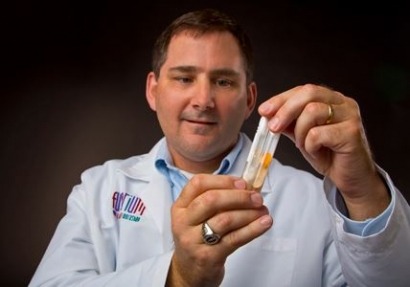
The grant will provide DNA genome sequencing for up to 600 strains of Neurospora crassa, a mold species used in classical genetics and also as a model for bio-fuel development.
Collaborators on the grant include Blake Simmons and Scott Baker of the Joint BioEnergy Institute.
“Scientists are looking at new ways of turning plant material into fuel, and Neurospora crassa is a model for how microbes can help this process,” McCluskey said. “Neurospora can break down complex molecules and can be used as a research tool to understand how other organisms break down complex plant material.”
Neurospora crassa is a common plant-associated mold that grows along with sugar cane and other plants and which also grows on bread in open-air bakeries. It was first described as “pink bakery mold” during the Napoleonic wars.
Classical genetic analysis was used to study Neurospora crassa beginning in the 1940s. Scientists chose this simple harmless mold for early genetic studies because it is easy to make mutants and do genetic crosses for study.
With the grant, McCluskey and his collaborators will choose among the many mutant strains of Neurospora crassa in the Fungal Genetics Stock Center at UMKC and grow the sample in a test tube.
Each sample is tested to make sure that it is pure and then the DNA is extracted with a simple bench-top process. The DNA is sent to the U.S. Department of Energy Joint Genome Institute in Walnut Creek, CA where DNA sequencing is carried out.
The Department of Energy provides preliminary analysis, consisting of comparing each DNA sequence against a well-curated “reference” genome DNA sequence. This reference is the same strain that was used to make many of the mutants, which simplifies the process.
“Our community decided to use the same strains in the early 1960s so that we are all comparing apples to apples, as it were,” McCluskey said. “When we look at the differences in the new DNA sequence, and then ask if the same difference is found in any of the other strains we are sequencing, we can identify the unique mutation in each individual strain.”
For additional information:

